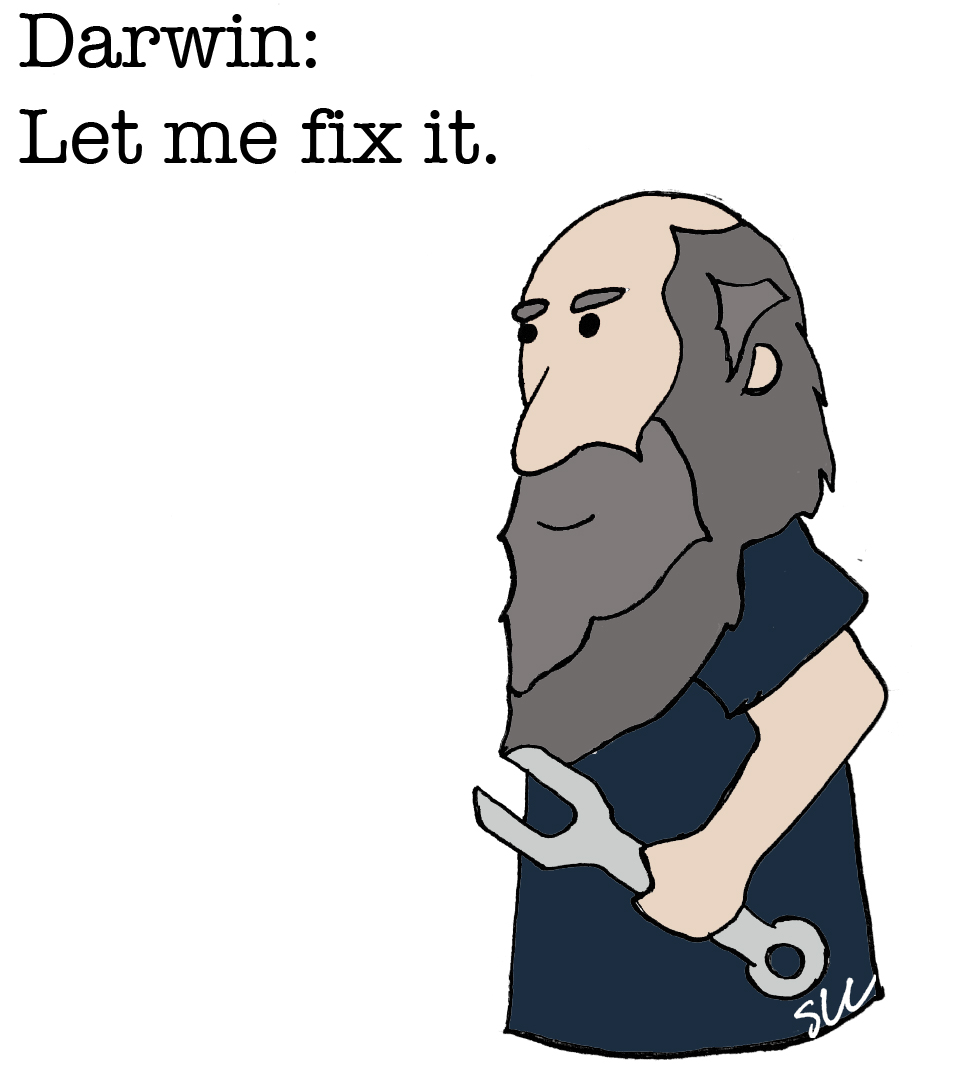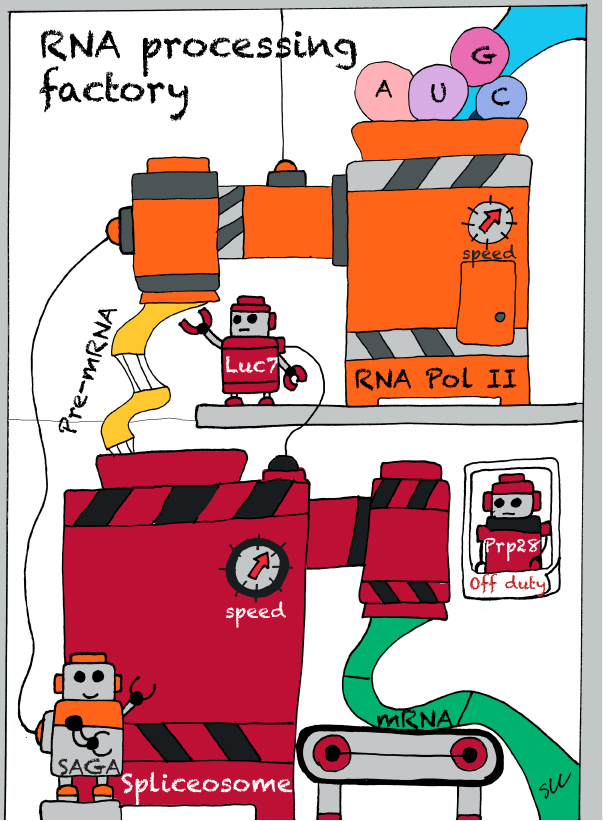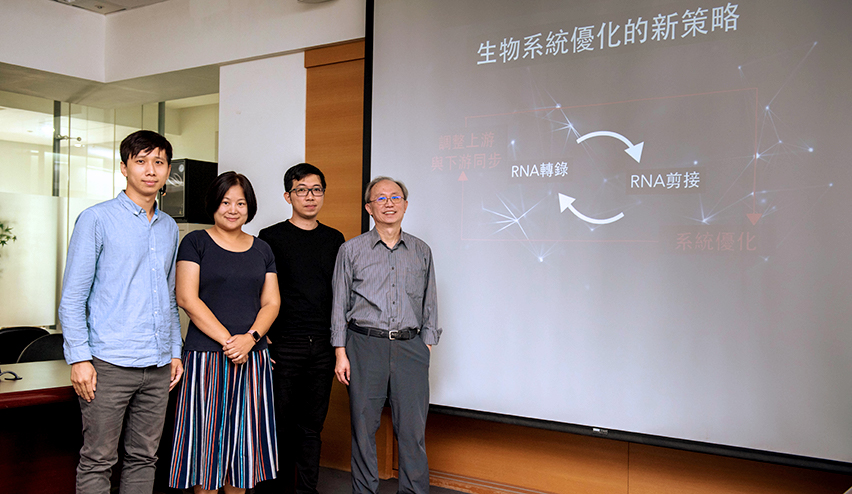When an essential car part dies, we expect the car dies as well. Same must also be true for the cell, so we think, because cell is akin to a hugely complicated “car”, in which many micro-machines work together under the hood to produce life. Well, one should know better. Here is a mind-boggling story regarding how cell manages, via the awesome power of evolution, to rescue itself from near death in the face of losing an indispensable gene (or “car part”).
Some years ago, Dr. Tien-Hsien Chang, a researcher at the Genomics Research Center (GRC), made a surprising finding that a so-called “essential” (indispensable) gene, PRP28, can be eliminated from the cell and yet the cell remains alive. It turns out that such a Prp28-less cell survives because of the presence of another mutation (genetic modifier) in the genome. This Prp28-less cell, although alive, grows very poorly at low temperature. Contemplating about this odd finding at the time, Dr. Chang speculated that this might be a “resilience” strategy for cell to cope with imminent crisis, e.g., the sudden loss of an essential gene, so that the cell stands a chance to survive and perhaps even venture into new direction to regain vitality when opportunity arises. Unfortunately, there was no way to test whether this hypothesis is correct or not at that time.
 |
| Fig.1 : Fixing a molecular machine by Darwinian experimental evolution. |
Years later, entered Dr. Shang-Lin Chang (a.k.a. Sean). Sean, a postdoctoral fellow in Dr. Chang’s lab, who trained in the field of molecular evolution during his Ph.D. study, took up the challenge to test the provocative hypothesis. Sean decided to employ experimental evolution to evolve the Prp28-less cell to see if the barely surviving cell will eventually turn into a wholesomely healthy one. So Sean evolved the cell for over 300 generations while keeping the selection pressure, i.e., low temperature, on at all time. The idea is that during these 300 rounds of cell doubling, mistakes (mutations) in DNA replication will accumulate and, hopefully, some of which will improve the odds of Prp28-less cell to grow ever better under pressure. This experiment is exactly the Darwinian evolution simulated in the laboratory.
The outcome of this experiment could not be more astounding. Yes, the Prp28-less cell eventually arrives at a state rivaling that of the wild-type cell. That is, rising up from the Prp28-less “ashes” now stands a new life that no longer needs the once indispensable Prp28. Remarkably, the Prp28-less cell accomplishes this feat by tweaking a separate micro-machine (called “transcription”) distinct from the micro-machine (called “splicing”) that Prp28 plays a key role. Sean’s finding thus provides a powerful support that the two micro-machines, transcription and splicing, are intimately coupled with each other in the cell, so altering one (transcription) helps to rescue the defects of the other one (splicing).
 |
|
Fig.2: Darwinian solution: fixing a broken spliceosome by tweaking transcription machinery. |
Perhaps most critically, Sean’s study puts forward a broad perspective that the intrinsic interconnectivity within a biological system can be exploited for adaptive evolution and system re-optimization. It also showcases one of the evolved “resilience” strategies for coping with imminent crises.
In the big picture, Sean’s study validates what Theodosius Dobzhansky (1900-1975) once said “Nothing in biology makes sense except in the light of evolution”, in that evolution permits endless possibilities in life and so it is the foundation of life.
In the latest Nature Ecology and Evolution: https://www.nature.com/articles/s41559-018-0684-2
Professor Chang was also invited by Nature Research Ecology & Evolution Community (NREEC) to contribute a blog explaining the story behind the research paper. NREEC is an online forum for the sharing and discussion of news and opinion in ecology and evolutionary biology. The blog can be seen here: https://natureecoevocommunity.nature.com/channels/521-behind-the-paper/posts/39098-how-can-you-mend-a-broken-cell-let-experimental-evolution-show-you-how
 |
| Team members: (from right to left) Dr. Tien-Hsien Chang、Dr. Shang-Lin Chang、Dr. Luh Tung、Ph.D. candidate Hsuan-Kai Wang |